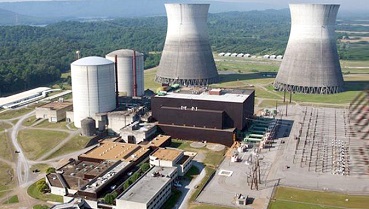Growing support for nuclear power in the Australian parliament is challenging the establishment political parties—the Liberal/National Coalition and Labor Party—whose leadership have long dismissed this high energy density alternative for power generation. Two thirds of Coalition backbenchers now support lifting the nuclear power ban, and several voices in Labor also agree. In addition, Australian Workers’ Union secretary Daniel Walton continues his years-long campaign to support domestic nuclear power.
he nuclear debate comes in the context of the government’s Clean Energy Finance Corporation Amendment (Grid Reliability Fund) Bill 2020 which amends the Clean Energy Finance Corporation Act 2012 to establish a $1 billion Grid Reliability Fund. The bill expands the scope of “low-emission technology” so certain types of gas-fired electricity generation will be included in the energy technology mix. Member for New England Barnaby Joyce issued an amendment to include High Efficiency Low Emissions (HELE) coal-fired power stations that have an emissions intensity of less than 80 per cent of the existing generation system.
On 18 February, the Nationals Senate Team decided to move additional amendments to support nuclear power, carbon capture and storage and HELE power stations. NSW Senator Perin Davey said, “it is blindly hypocritical to preach net zero and block a zero-emission technology that can meet base load power requirements consistently and reliably—nuclear.” This move puts pressure on Nationals leader Michael McCormack, who has previously reverted to the standard government line that “nuclear power isn’t on the table”.
On the same day as the Nationals’ pro-nuclear amendment, the Australian reported that Labor senators Raff Ciccone and Alex Gallacher say their party should reconsider its long-term opposition to nuclear energy at next month’s national conference. Senator Gallacher said it would make “perfect sense” to lift the ban on nuclear power. “If you want to advance the climate change agenda, you need firming power and nuclear should be in the mix”, he said. Labor MP Joel Fitzgibbon also came out strongly supporting nuclear power in January (“Labor leaders expose ‘renewables’ folly”, AAS, 17 Feb. 2021).
Opposition to nuclear ignores reality
Despite several Labor MPs publicly supporting nuclear power, party leader Anthony Albanese accused the Coalition of “more chaos” in energy policy following the Nationals Senate Team amendments for clean energy definitions. He said that he’s “not a supporter of nuclear energy in Australia because it doesn’t stack up. There have been numerous reports, occasionally you’ll get opinion pieces … suggesting this, and no serious propositions have ever come forward on it”, he told reporters in Canberra.
The Australian Conservation Foundation (ACF) (led by former Macquarie Bank Associate Director Mara Bún) reacted immediately to the new proposals for the Clean Energy Finance Corporation (CEFC) in an 18 February media release. “Talking up nuclear and new coal-fired power plants is a dangerous distraction from facing up to Australia’s very real energy challenges and choices”, said ACF campaigner Dave Sweeney. “Despite the urgent need to cut climate pollution—which is why the CEFC was established—no country in the world is choosing to set up a nuclear industry from scratch”, Sweeney claimed.
In fact, several countries are indeed setting up new nuclear industries:
- Bangladesh started construction of its first nuclear power reactor, Rooppur 1, in November 2017. The unit is scheduled to be commissioned in 2023. Construction of a second reactor at Rooppur commenced in July 2018. Combined, the reactors will produce 2,400 MW of electricity.
- Egypt plans to build four large Russian VVER-1200 nuclear power reactors with significant desalination capacity.
- Turkey’s first nuclear power reactor, at Akkuyu, commenced construction in April 2018. A second reactor at the site commenced construction in April 2020. The start-up for these reactors is scheduled for 2023 and 2024, respectively. Two more reactors for this site are about to begin construction and are scheduled to be complete in 2025 and 2026.
- Uzbekistan has plans for the construction of two large VVER-1200 Russian reactors to be commissioned about 2028. The US$13 billion project is expected to save 3.5 billion cubic metres of gas per year.
In April 2020 the Citizens Party called to use the CEFC as an emergency national investment bank. So it’s curious that many establishment party politicians are now calling to use public credit from the CEFC to finance HELE coal-fired power stations and nuclear power. This development is welcome to ensure electricity grid stability and lower power prices. Without this baseload power, the grid is in grave danger of collapse due to the growing amount of intermittent power sourced from wind and solar generators.
The carbon capture and storage (CCS) proposal from the Nationals Senate Team, however, must be rejected as a scientific fraud that will add enormous costs to electricity production for no environmental gain. CCS via geosequestration requires vast amounts of energy to pump the CO2 deep underground into geological formations, and would be better described as “oxygen burial” given oxygen makes up 73 per cent of the mass of CO2 . And there’s no guarantee the gas won’t leak out over time with seismic events.
The shift in parliamentary support for nuclear power, however, is the big gamechanger. While two-thirds of Coalition backbenchers now support lifting the nuclear ban, only Queensland senator Paul Scarr was opposed, citing a lack of community support “at this stage”. The remaining third were undecided or declined to comment. Combined with shifts in the Labor Party, nuclear power generation in Australia may become a reality much sooner than many could imagine.
By Jeremy Beck, Australian Alert Service, 24 February 2021







